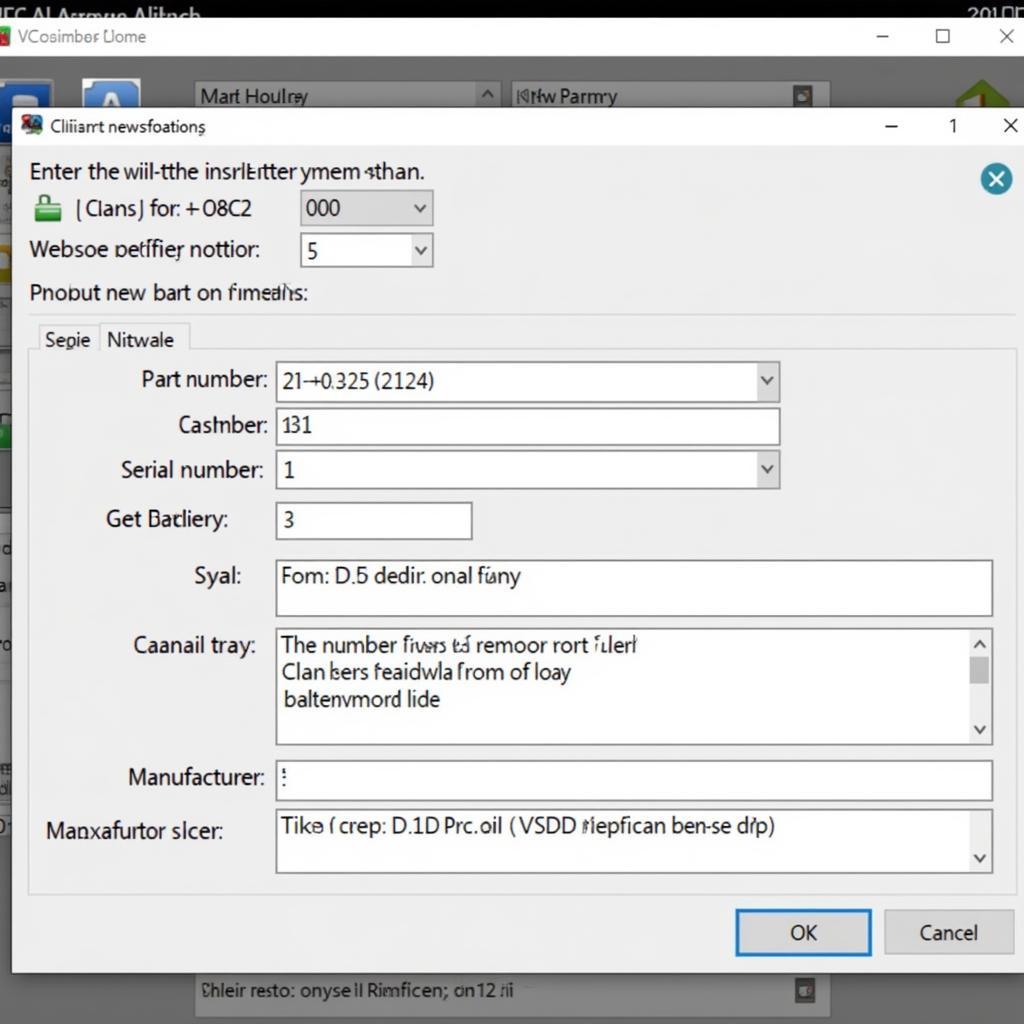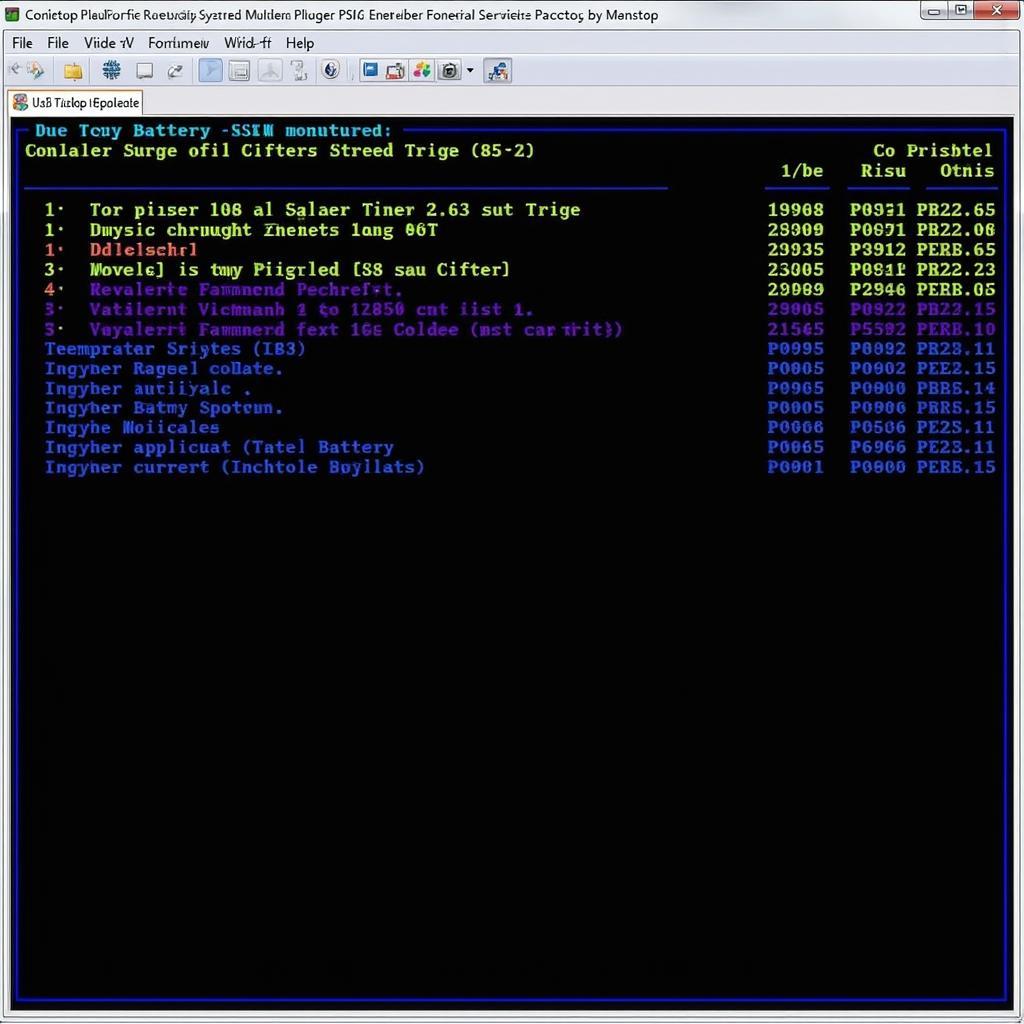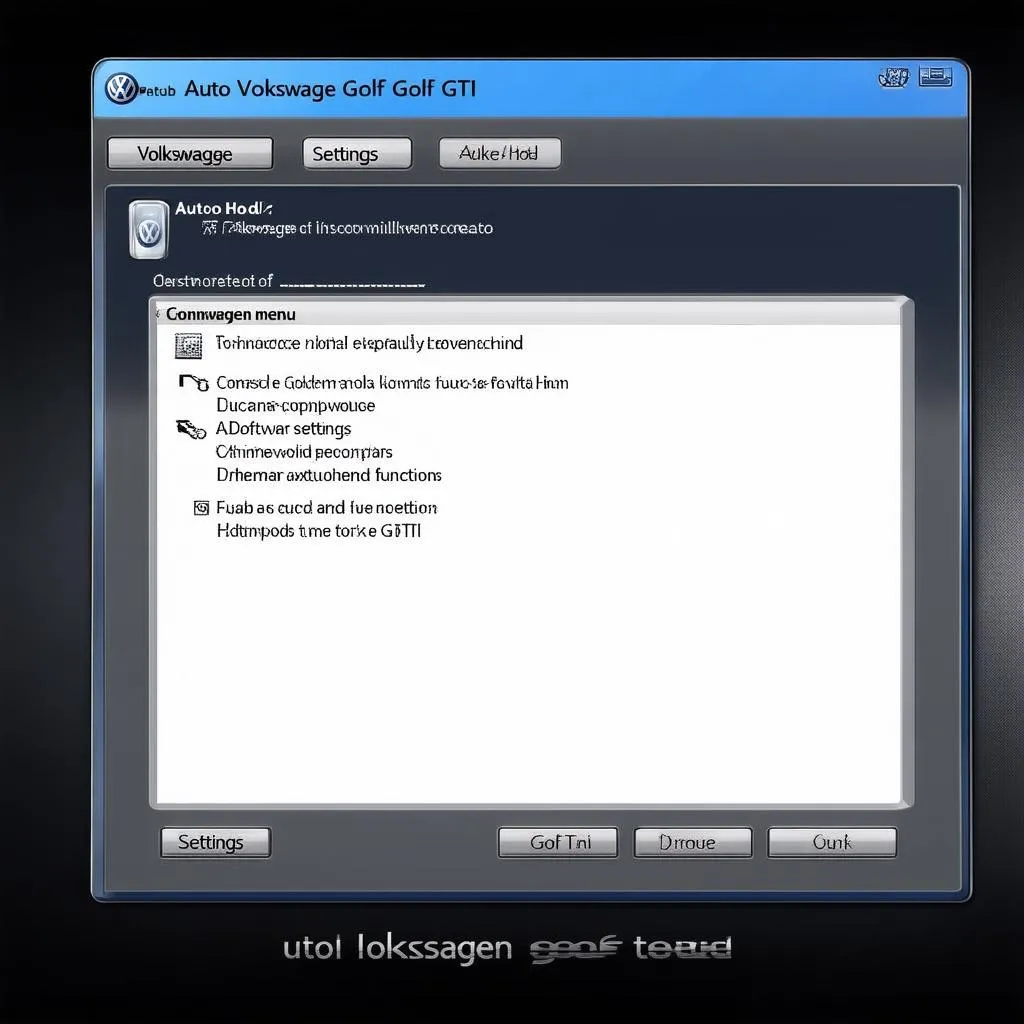VW VCDS coding allows for precise control over various vehicle systems, including the car battery. Understanding how to use VCDS for battery-related coding can be incredibly valuable for both DIY enthusiasts and professional mechanics.
Understanding the Importance of VW VCDS Coding for Your Car Battery
Proper battery coding is crucial for maintaining the health and longevity of your VW’s electrical system. When replacing a battery, simply swapping the old one for a new one isn’t enough. The car’s Battery Management System (BMS) needs to be informed about the new battery’s specifications to ensure optimal charging and performance. Without correct coding, the BMS may not charge the new battery correctly, leading to premature failure or reduced lifespan. This can also impact other systems reliant on the battery, causing unexpected issues. Similar to vcds airbag coding, battery coding requires precision and the correct understanding of procedures.
How to Code a New Battery with VCDS
Coding a new car battery with VCDS is a relatively straightforward process, but it requires careful attention to detail. Here’s a step-by-step guide:
- Connect VCDS: Connect your VCDS interface to the car’s OBD-II port and launch the software on your laptop.
- Select Control Module: Select the “19-CAN Gateway” control module.
- Adaptation: Go to the “Adaptation” function.
- Channel Selection: Locate the channel related to battery coding. The specific channel number might vary depending on the VW model and year. Consult your VCDS documentation or online resources for the correct channel.
- Enter New Battery Information: Enter the new battery’s information, including part number, serial number, capacity (Ah), and manufacturer. This information is crucial for proper BMS operation.
- Save Coding: Save the new coding and exit VCDS.
“Accurate battery coding ensures that the vehicle’s charging system operates correctly and maintains the battery’s health,” explains John Miller, Senior Automotive Electrical Engineer at Apex Automotive Solutions.
 VCDS Battery Coding Data Entry
VCDS Battery Coding Data Entry
Common Issues and Troubleshooting
While VCDS battery coding is generally straightforward, sometimes you might encounter issues. Here are a few common problems and how to resolve them:
- VCDS Not Connecting: Ensure the VCDS interface is properly connected and the drivers are installed correctly. Try a different USB port or cable. Issues like this can be similar to those encountered with vcds too many communication errors.
- Incorrect Coding: Double-check the entered battery information. Any discrepancies can lead to charging problems.
- BMS Errors: If you encounter BMS errors after coding, try clearing the fault codes using VCDS. Like vcds no long coding helper, sometimes a simple reset can resolve these issues.
Just as with how to code key to vcds, attention to detail is key for successful coding.
 VW Battery Management System Diagnostics
VW Battery Management System Diagnostics
Why Accurate VW VCDS Battery Coding Matters
Accurate VW VCDS battery coding is essential for several reasons:
- Optimal Charging: Ensures the BMS charges the battery correctly, preventing overcharging or undercharging, which can damage the battery.
- Extended Battery Life: Correct coding helps maximize the lifespan of your car battery, saving you money in the long run.
- Improved Fuel Economy: A properly functioning BMS contributes to better fuel economy by optimizing energy usage.
- Prevent Electrical System Issues: Inaccurate coding can lead to various electrical problems, affecting various systems in the car. For example, issues similar to vw vcds comfort blinking could arise.
“Investing in a good quality battery and correctly coding it using VCDS is a smart way to ensure the long-term reliability of your VW,” advises Maria Sanchez, Lead Technician at European Auto Specialists.
Conclusion
VW VCDS coding for car batteries is a crucial step when replacing a battery. While seemingly a small procedure, it significantly impacts the health and longevity of the battery and the overall electrical system. By following the steps outlined above and paying attention to detail, you can successfully code your new battery and ensure optimal performance. Accurate coding is an investment in the long-term reliability of your vehicle.
FAQ
- What is VCDS? VCDS is a diagnostic software used for Volkswagen, Audi, Seat, and Skoda vehicles.
- Why do I need to code my new battery? Coding informs the BMS about the new battery’s specifications, ensuring correct charging.
- Where can I find my battery’s information? The battery label usually contains the necessary information.
- What happens if I don’t code my new battery? The BMS might not charge the battery correctly, leading to reduced lifespan and potential electrical issues.
- Is VCDS coding difficult? No, the process is relatively simple, but it requires careful attention to detail.
- Can I damage my car with incorrect coding? While unlikely to cause significant damage, incorrect coding can lead to battery and electrical system problems.
- Where can I get help with VCDS coding? Online forums, VCDS documentation, and professional mechanics can assist you.
For any further assistance with VW VCDS coding or any other car diagnostic services, please don’t hesitate to contact us via Whatsapp: +1 (641) 206-8880, Email: CARDIAGTECH[email protected] Or visit us at: 276 Reock St, City of Orange, NJ 07050, United States. Our customer support team is available 24/7.

